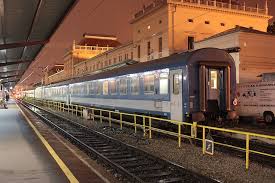Discovering Zagreb: Croatia’s Dynamic Capital

Introduction
Zagreb, the capital of Croatia, stands as a vibrant testament to the country’s rich cultural history and modern developments. As the largest city in Croatia, it has become a focal point for tourists, businesses, and cultural exchanges, making it essential for understanding the dynamic essence of contemporary Croatia.
The Historical Significance
Zagreb’s history dates back to the Roman era, with its current form emerging in the 19th century as a result of significant developmental efforts. The city’s historical core, marked by medieval structures, offers a glimpse into the past with landmarks such as the Cathedral of the Assumption and the medieval Lotrščak Tower. The city played a central role during the Croatian War of Independence in the 1990s, shaping its national identity.
Economic Growth and Development
In recent years, Zagreb has witnessed considerable economic growth. Its strategic location in the Centre of Europe facilitates trade and tourism, contributing to a booming economy. The city is a hub for tech start-ups, attracting investment and fostering innovation. According to data from the Croatian Bureau of Statistics, Zagreb accounts for roughly one-third of Croatia’s GDP, highlighting its importance in the national economy.
Tourism and Cultural Offerings
Zagreb’s tourism industry has flourished, particularly following its recognition as an emerging destination within Europe. The city’s cultural calendar is full of art exhibitions, music festivals, and gastronomic events that showcase its diverse heritage. Notable attractions include the Museum of Broken Relationships, a unique concept that resonates with visitors, and the lively Dolac Market, which offers local produce and crafts.
Future Outlook
Looking ahead, Zagreb is poised for continued growth and development. Urban planning initiatives are underway to enhance infrastructure and sustainability, aiming to bolster both its livability and attractiveness to visitors. With its blend of historical charm and modern innovation, Zagreb is set to become an increasingly significant player in the region’s economy and culture.
Conclusion
In conclusion, Zagreb represents a unique mixture of history and modernity, making it an integral part of Croatia’s identity. As the city continues to evolve, it promises to offer both residents and visitors alike a rich tapestry of experiences that reflect the culture, innovation, and resilience of Croatia. Future developments will likely secure its position not just as the capital of Croatia but as a significant cultural and economic hub in Southeast Europe.









